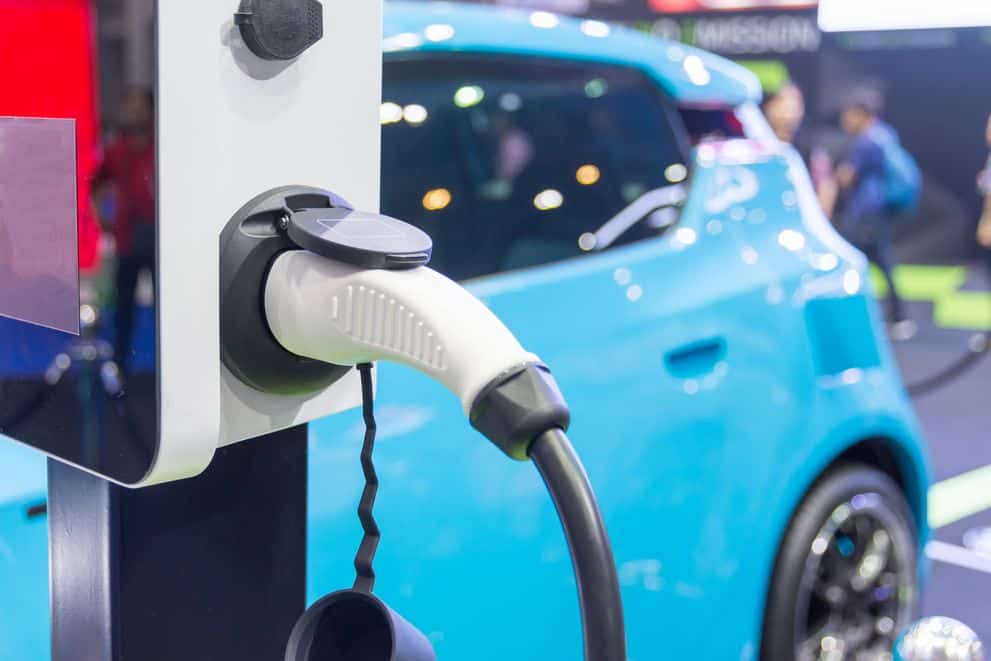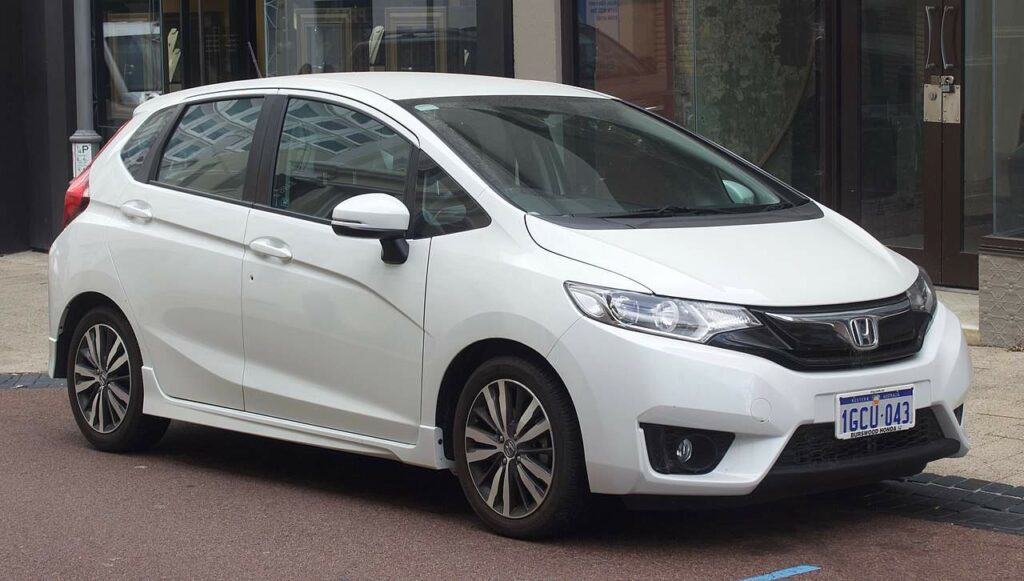7 January 2020 Concept Car
If you think about it, car depreciation is outright weird. Just imagine: You buy a car at £50,000. The moment you drive it off the lot, it is suddenly worth only £40,000. Within a year, it’s value has fallen to £35,000. How does this make sense?
The car is, at this point, still as good as new. In fact, thanks to it getting a few miles on the road, it may actually be better than new. And yet, in the eyes of the market, it is already beyond its prime.
There is no point arguing about this. Depreciation is a fact. Depending on your situation, you will either love it (as a buyer) or hate it (as a seller). Either way, there is very little you can do about it.
The more you understand depreciation, the more you can put it to your advantage. In this special, we’ll show you just how to do that.
Things are not as complicated as they may seem. Everything depends on two basic factors: Age and mileage. The real questions are: In which way, exactly? And: Which of the two is more important?
In this article, we’ll give you the scoop on depreciation. It’ll be a long trip, but if you stick with us, we’ll give you some valuable, hands-on recommendations to decide when it’s better to buy an old car with few miles and when you’re better of with a relatively new car which has been driven a lot.
Let’s begin our journey with age. Age, after all, is the primary determinant of depreciation. Typically, in used car lists, you will find the current value of a particular model next to its model year. Other aspects seem to play only a minor role in comparison.
Not all products depreciate with age. Wine, for example, is said to become better the more time it spends in wooden barrels. Some precious books can also appreciate over time. Most technical items, however, typically depreciate. And their rates of depreciation curiously tend to be quite similar.
It is not hard to see why cars should gradually become less valuable:
This is somewhat harder to explain away. With all likelihood, we can put this down to psychology. A factory new car on the lot is 100% your personal possession. It is yours and yours alone. Once someone else has laid her hands on it, it will never quite feel that way again.
Maybe that’s not particularly rational. But ask yourself honestly: Don’t you ultimately feel the same way?
All of this is easy to understand. Unfortunately, the situation becomes more complex the closer you look. The most important twist to the story: Each brand and even each model depreciates differently.
In the not too distant past, some cars tended to rust faster than others. These obviously lost their value more drastically. Today, quality differences between different makes have become a lot smaller.
Toyota and Lexus, for example, are known to to hold their value well, mainly thanks to their reputation for building cars that simply won’t break.
Others rely on the technical excellence of their construction. German cars in particular are held to be among the finest technical products of any category. This makes them extremely desirable even at a higher age.
Finally, there are special cases. The Dacia Duster, for example, is one of the slowest cars to depreciate. This, despite also being one of the cheapest vehicles available in the UK. The point is that it is so cheap new that there is very little reason for most people to buy it second hand. It is pretty reliable, too. This means it retains its value like very few of its competitors.
Mileage is the second big influence on the value of a car. It is, to a degree, already calculated into age-related depreciation. Which makes sense. After all, the older your car, the more you’ll have driven it.
Still, mileage is an important influence on depreciation in its own right. Age-related depreciation assumes an average yearly mileage of about 10,000-12,000 miles. Anything far above or below that number is going to affect the price of a car.
This, too, is self-explanatory. The more you drive your car, the more its moving parts will wear off. This is especially true for parts such as the tyres, motor or serpentine belt. But in the end, it ultimately applies to every single screw of the car.
Most parts are built to last a certain mileage. Even the most expensive ones will eventually break and need to be replaced. The higher the mileage, the more worn down the car will be, the more likely you’ll need to have the car fixed.
Some, as we’ll see in more detail in a bit, will even argue that it’s not the age of the car that counts, but only the mileage. After all, a 10 year old car with only 100,000 miles on the odometer can still be in great shape. But you could well expect a car that’s just 3 years old with the same mileage to be in a worse condition.
Just as with age, mileage is an imperfect predictor of quality.
For one, you actually need to drive your car regularly over longer distances for it to stay in shape. Many of the moving parts lubricate themselves through driving. So letting them catch dust in your garage is not going to do them any good.
When it comes to the engine, too, miles are usually a good thing. Potentially detrimental particles, for example, are automatically ejected from the system by keeping the engine running. A car that’s mostly resting is only going to clog up and gradually deteriorate.
Finally, a lot depends on how and where you drive your car. City traffic is far more taxing on a car than highway driving. Vice versa, aggressive breaking and reckless manoeuvring will cause your car to age a lot faster than a calm and balanced driving style.
So the reply to the question how mileage influences is as simple as it is dissatisfying: It depends!

This is why many experts are trying to introduce a third variable into the mix: The condition of the car.
At first sight, this seems like a great idea. The condition of a car is what really matters, after all. Even very old cars with a high mileage should still be valuable, depending on how the previous owner treated them.
However, condition is a problematic indicator. Although there are vehicle inspection check lists available online, these are by no means ‘objective’. They also tend to require an expert to help you assess the different check points on the list.
More fundamentally, ‘condition’ is heavily dependent on mileage and age. Outside of these two factors, its explanatory powers are limited.
This is not to say you should ignore the condition of the car. Quite on the contrary. In our opinion, you should use it as a sort of ‘check sum’. If a fairly young car with a low mileage does not look very good, this can tell you quite a bit about its driver, and vice versa. Other than that, condition is often too subjective to be useful.
There is a simple formula to calculate how age affects the value of a particular car model:
Depreciation Per Year = (Original sale value – Current value) / Car’s age in years
Put into words, you simply take a look at how much value a model has lost after a certain amount of time and then divide that by its age. The result will show you the yearly drop in value.
Sometimes, age related depreciation is expressed more positively, as a percentage of the original purchase price. A car could, for example, have retained 60% of its price after three years. (Which is a pretty good number, in case you’re wondering).
The data for these calculations are provided by car dealers all around the UK. Specialised websites like Parkers organise the information and make it available to the public.
This way, you can quickly and easily get a pretty exact idea of how much you should be spending for a potentially interesting model.
The convenience and usefulness of these depreciation lists is undeniable. At the same time, there is a major problem with them: They tend to set the used market value of a certain car into stone.
Once a car has a reputation for heavy depreciation, it is very hard to shake that burden. Vice versa, cars with a reputation for quality can continue to achieve high prices even if their reliability record has dropped (see German cars in particular).
There is very little you can do about this. Some cars are more desirable than others, regardless of these ‘facts’. But, you should definitely keep them in mind if you’re looking for an affordable medium of transportation.
Vauxhalls, for example, are usually sold at bargain prices used. But they tend to be incredible cars to drive, even after many years of use. That makes them a fantastic proposition on a tight budget.
Many people will claim that mileage based depreciation is just as easy to measure as age related depreciation. Nothing, however, could be further from the truth. In reality, mileage is one of the most mysterious variables in the price setting ritual.
Let’s analyse why this is the case.
According to the same experts who gave us the formula for time based depreciation, you can measure mile based depreciation with an equally simple approach.
First, compute depreciation per year using the formula we previously gave you. Then, calculate mileage based depreciation thus:
Cost per mile = (Depreciation per year / Annual car mileage ) x 100
This seems like a perfectly reasonable concept and will work out to a depreciation of between 0,08 and 0,26 per mile driven.
The thing is that this formula makes cost per mileage entirely dependent on the age based depreciation. As we’ve already established, this is partly sensible. But it is not useful for those cases, in which you have a wildly differing age and mileage.
How to estimate the true value of a ten year old car with 60,000 miles versus the same model as a six year old car with 100,000 miles, for example?
We’ll get into the finer details of this question in the next paragraph. There are, however, some general guidelines when it comes to estimating the costs of mileage.

In a short but instructive youtube video, webuyanycar.com have offered, a basic rule for calculating mileage-based depreciation. Rather than looking at the exact mileage, you instead group vehicles into bands of 20,000 miles.
This works as follows:
As soon as a car enters the next mileage band, it loses about 20% of its value.
What’s better: A ten year old car with 60,000 miles versus a six year old car with 100,000 miles? Let’s say this particular model cost £25,000 new in both cases.
In the first case, you would expect a sales price of roughly £9,000, somewhere in the middle between its price based on age and its price based on mileage. In the second case, the low mileage of the car will definitely improve its low age based value. But since age is considered a more significant determinant of a car’s price, you would definitely expect it to end up lower than £9,000.
Which means that, on paper, a younger car with higher mileage will yield a better price on average than an older car with lower mileage.
Still, some in the community feel things should be the other wax round. .
A commentator on pistonheads, for example, clearly feels mileage takes precedence:
“I’m always looking for low miles. The age plays the second role in my book. Bought my 330d as a 10 year old car with 36K miles … zero problems so far, except small things.”
Anecdotal evidence is obviously not quite as convincing as expert opinion. Even with experts, though. you’ll find quite a few voices supporting the mileage-is-most-important hypothesis.
Doug DeMuro of AutoTrader.com is one of them. According to him, mileage determines the longevity of most car parts, especially of the engine and suspension. These parts will need to replaced after a certain amount of miles and can be costly investments.
Doug has a point. Nonetheless, we’ll side with those claiming that age is more important still.
Probably the single most important reason is the incredible durability of most cars these days. As Consumer Reports state:
“Not long ago, to keep a car running beyond the 200,000-mile mark would have seemed about as likely as driving it to the moon. But big improvements in powertrain technology, rust prevention, lubricants, and more have led to game-changing improvements in reliability and durability. Now, almost any car can make it well into six-figure territory with proper care.”
In another article, an American car dealer is quoted as saying: “An odometer reading of 200,000 miles is nothing, really nothing. These late model cars just run, run, run, as long as you change the oil and maintain them.”
According to numbers provided by Consumer Reports, we are all driving our cars for a lot longer than we used to. Today, the average car on the road is 11 years. Twenty years ago, this was almost three years less.
Medium.com explains why a younger car with more miles may be the better choice indeed:
“Parts in a car, especially the rubber components deteriorate over time, regardless of mileage. It’s entropy at work. On top of that, cars are meant to be driven so cars with higher mileage tend to last longer because car tends of lubricate itself more often and burns carbon build up which are all helpful for a long lasting engine.”
In fact, UK car centre Philip Paul even goes as far as to argue that a higher mileage may be an indicator of quality:
“The mileage is likely to mean that any teething problems will have been sorted early in the car’s life, and will be well behind it. If the vehicle is an ex-company or fleet car, it could have spent much of its time travelling at relatively relaxed motorway cruising speeds. These are far healthier for an engine, and cause much less wear and tear than being driven in slower, regular stop-start traffic.”

These are exciting times for the car industry. Electric cars are winning over new drivers every day. And they are questioning our established approaches to calculating depreciation.
An electric car looks nothing like a regular petrol or diesel car under the hood. It does not work with the same system of moving parts. In fact, in an electric car, there is hardly any wear and tear because of the actual driving – if we forget about the tyres for a second.
This is why some have questioned why the same rules of depreciation should apply to them.
Although there is something to be said about this, quite a few of the reasons for depreciation also apply to electric cars: They age. They are overtaken technically by new and better models. Their parts deteriorate due to age. They are increasingly prone to repairs.
Electric cars are a great alternative to traditional models. They may end up depreciation less at some point in the future. In the end, however, they, too, are not exempt from the fundamental problems of depreciation.
Now we’ve established that age may be a better predictor of a car’s value than mileage, let’s back peddle a bit. You see, the relationship between these two numbers is a delicate one. And it is constantly changing.
For one, mileage plays a different role with different types of cars. According to some, it matters most with ‘enthusiast vehicles’ and less with more conventional ‘economy’ cars. Depending on your definition of ‘enthusiast’, this makes more or less sense, since quite a few of these vehicles are not intended to be driven a lot.
Others will claim that mileage becomes less and less important the older the car gets. There is something to be said for this. Are you really going to rate a car with 150,000 miles worse than one with 200,000? Hardly. The other way round, though, a three year old model with 100,000 miles on the odometer does sound a bit fishy.
As you can see, even with some of the indications we’ve given, the issue remains complex.
With the theory firmly established, let’s now start putting things into practise. The first question you’ll need to answer is this:
What is the best relation between age and mileage?
Let’s first consider that there obviously combinations where both types of depreciation perfectly overlap. A 3-year old, £25,000 car costs £15,000 after three years. The same car will reach the same price based on mileage roughly after more than 40,000-45,000 miles. So any car which is 3 years old and has less than 40,000 miles is a good deal. Anything a lot higher than 40,000 should be priced under £15,000 accordingly.
But cars do not depreciate in a linear mode. Eventually, depreciation levels out. After about 10 years, neither age nor mileage play a particularly significant role anymore. Leading up to this natural end to depreciation, there are several sweet spots for buying a used vehicle.
Let’s take a look at these now.
An obvious first sweet spot is the three year mark. As we’ve mentioned, by this time, many cars have shed half of their original price. At the same time, they still feel as good as new. This makes them a terrific proposition, if you have enough money to pay for them.
If you don’t, you can get a second chance after six years. By this time, the price of the car should have halved again. So, although the vehicle will by now no longer feel perfectly new, it should still drive just fine – and come at a far more agreeable cost.
Finally, a ten year old car in a decent condition is another great option. If you buy one of these and treat it well, you may be able to drive it for 3 or 4 years and sell it at roughly the same price you bought it at. Alternatively, you can keep driving it until the wheels fall off or until repairs become too expensive.
Probably, yes. The always helpful Mr Money Mustache considers 75,000 miles the sweet spot. (which, on average, translates to 5-6 years of driving) The idea is that you can save a lot of money compared to a new car. At the same time, repair costs should still be within acceptable limits.
We’re going to expand this thought for a second. 75,000 is clearly a sensible figure. But you can do even better than that. Remember those bands of 20,000 miles we discussed earlier? Once a car enters the next band, its value takes another 20% hit. So if you buy a car with more than 80,000 miles, it will drive just as fine as a 75,000 miles model – but at a 20% lower price!
As with age, depreciation based on mileage eventually levels out, roughly at the 100,000 miles mark. This, then makes for another excellent point to buy a car.

But we can still go even deeper with our thoughts on depreciation. Let’s take a look at this query, presented to the members of an online forum:
“I’m in the market for a Honda Fit. I can spend $9500 and get a 2009 Red Fit with black interior with 70,480 miles. Or I can spend $7400 and get a 2009 Red fit with gray interior with 105,585 miles. Which is the better value for me?”
Both car deals sound fine on paper. By the time this example was discussed, these vehicles were seven years old, so almost at the point where their age didn’t matter anymore. So even if we knew the exact price of the original Honda when it was still new, this won’t be an easy decision.
But think of it this way. Let’s assume you’re driving 15,000 miles per year. After three years, the former Honda Fit will have pretty much exactly 100,000 miles on the odometer. The latter one will clock in at 150,000.
Curiously, although both models have driven the exact same amount of miles, the latter one will not have lost a lot in value. After all, depreciation has already all but levelled out at 105,000 miles. So, in terms of mileage, you have retained almost the entire value of the car.
The 70,000 mile Honda, however, will have taken a huge hit. After all, it will have moved up two bands in mileage based depreciation, reducing its value to 6,080 – a drop of 35%!
If both cars look fine, this means that, paradoxically, the higher mile model is a lot better at retaining its value.
There’s something else you should consider. Let’s look at a very similar example, provided by medium.com:
“We have a 2007 Pontiac G5 with 119,000 miles for $6,000 and the same car with 69,000 miles for $11,000. After 25,000 miles, the first car has 144,000 miles and sells for $4600 which is a depreciation of $1400. The car with less miles goes from 69,000 miles to 94,000 miles and sells for $7500 which is a depreciation of $4600. So you can see per mile, it’s clearly cheaper to buy the car with higher miles and then sell it versus buying the lower mileage car.”
So far, so good. Now, however, the article takes an interesting detour. Let’s just say, for argument’s sake, that the car with the higher mileage will need some repairs. Also, let’s make these major repairs: A complete new engine as well as a new transmission.
An engine will set you back about 1,500, while a new transmission should cost roughly the same. So even if you should need to make these replacements, you’re still better off with the high miles.
As the author puts it: “If you look at these costs, when buying the car with lower mileage you are paying for a new engine and a new transmission 100% of the time! With a higher mileage car you are a paying for a new engine or transmission maybe 2–3% of the time. All you have to do is change your fluids properly and the chances are even less.”
This points to an interesting and rarely mentioned feat: Average repair costs are quite low, at least compared to depreciation! According to recent data, repair costs only add up to 3% of the original purchasing price after five years. This number may rise to twice that amount by the time it reaches its tenth birthday. Still, this number is well below depreciation.
What’s more, you will need to set the costs of these repairs against the interest paid on a new or second hand car. Quite often, you can get a lot of repairs done before a new car becomes cheaper.
Luxury cars are an obvious exception from this rule, of course.

This may sound like a little detour and perhaps it is. But quite clearly, the influence of the driver on the condition of the car is more than obvious. The safer and more careful you drive, the better your car will retain its value. Taking good care of your car also includes following the inspection schedule to the t and dealing with any potential sources of problems as soon as they occur.
Naturally, this is easier said than done. After all, how are you going to know much about the previous driver? Even if you’re buying your car privately, this often turns out to be a difficult task.
Together with an expert, you can assess the current state of the car. There are ways to determine, roughly, how it has been driven.
There’s no reason to get paranoid, however. Checking which radio stations the previous owner had set as her defaults, to determine her driving style, as has been suggested, seems a bit bizarre, to be honest.
We’re almost reached the end of our article. The information we’ve given you should help you arrive at a great choice when buying a car. When it comes to selling, meanwhile, it can be useful to keep a few things in mind.
Firstly, there is nothing you can do to improve the age of your car. This means that you’re going to get stung by deflation whatever you do. Also, trying to artificially limit your mileage defeats the purpose of owning a car in the first place.
More realistically, what you can do is:
By following these rules, you can gain a clear advantage. You will never be able to beat depreciation entirely. But you can at least soften its effect as much as possible.
7 January 2020 Concept Car